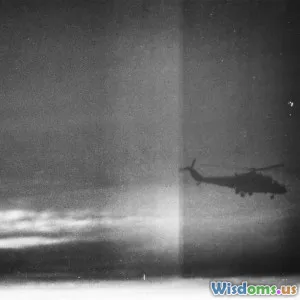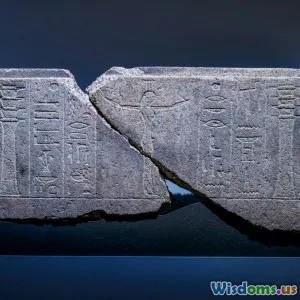
Is the Roswell Incident a Hoax Examining Evidence for and Against
8 min read An in-depth exploration of the Roswell Incident: hoax or hidden truth? We analyze evidence on both sides to reveal the mystery. (0 Reviews)
Is the Roswell Incident a Hoax? Examining Evidence for and Against
Introduction
The Roswell Incident remains one of the most enduring and controversial episodes in 20th-century American history. Sparked by a startling 1947 event near Roswell, New Mexico, it has ignited waves of speculation about extraterrestrial visits, government cover-ups, and secret technologies. Some regard the incident as authentic proof of alien contact, while others dismiss it outright as a hoax, a fabrication, or a case of mistaken identity. But what does the evidence actually say? This article aims to dissect this mystery carefully, sifting through available facts, testimonies, and official records to provide a clear, balanced view of whether the Roswell Incident was a hoax or something more complex.
Background: What Happened at Roswell?
In early July 1947, a rancher named Mac Brazel discovered unusual debris scattered across his property near Roswell. Shortly after, the U.S. Army issued a press release stating they had recovered a “flying disc.” However, this statement was quickly retracted and replaced with a claim that the debris belonged to a weather balloon. Over decades, this contradictory messaging fueled suspicions and conspiracy theories about what really crashed.
Key Events:
- July 8, 1947: The Roswell Army Air Field (RAAF) issues a press release about the mysterious object.
- Following Days: The Army retracts the statement and insists it was a weather balloon.
- Late 1970s: The story resurfaces with renewed vigor, featuring alleged eyewitness accounts of alien bodies and government cover-ups.
These events laid the foundation for decades-long speculation, spawning books, documentaries, and widespread pop culture references.
Evidence Suggesting the Roswell Incident Was a Hoax
1. Official Military Explanation and Documentation
The U.S. military has consistently maintained that the debris recovered was from a top-secret project known as Project Mogul—a program employing high-altitude balloons to detect Soviet nuclear tests. In 1994, the Air Force released detailed reports explaining how the materials, described as unusual but mundane, matched those used in that project.
- Project Mogul's Scope: Balloons with radar reflectors, aluminum foil, and other unconventional materials.
- Declassified Documents: Include photographs and inventory lists matching the type of debris found.
These disclosures suggest that initial military missteps, rather than conspiracies, explain the contradictory statements.
2. Absence of Credible Physical Evidence
Despite claims of alien technology or bodies, no verifiable physical evidence has surfaced. Scientific analyses of purported debris have continually revealed materials consistent with terrestrial manufacture.
- Skeptical Investigations: Groups like Skeptical Inquirer have analyzed samples attributed to the incident and found no anomalies beyond ordinary construction.
3. Inconsistent Eyewitness Accounts
Interviews conducted decades after the incident reveal contradictory recollections, weakening claims of a conspiracy.
-
Memory Distortion Risks: Human memory can degrade or be altered over time, a key consideration in evaluating decades-old testimonies.
-
Conflicting Stories: Descriptions of the debris and alleged alien bodies vary widely among witnesses.
4. Media Amplification and Pop Culture Influence
The story's sensationalization has arguably created a feedback loop where fiction and speculation influence purported facts.
- Hollywood movies and books have blurred the lines between fact and fiction.
Evidence Supporting the Reality or Mystery of the Incident
1. Initial Military Press Release Calling It a “Flying Disc”
The U.S. Army Air Forces initially announced the recovery of a “flying disc,” an unusual and dramatic term for the period. This official statement invites questions about what was truly found.
- Why the Quick Retraction? The sudden withdrawal and replacement explanation have fanned suspicions of a cover-up.
2. Eyewitness Accounts Describing Non-Human Objects and Entities
Several firsthand accounts come from military personnel and local civilians who claim to have witnessed debris or beings not resembling anything earthly.
- Majestic 12 Documents: Purported leaked government papers suggest covert meetings about recovered alien technology, though their authenticity is heavily debated.
3. Government Secrecy and Classified Operations Landscape
The Cold War climate encouraged extensive secrecy surrounding experimental military projects, which creates potential for misunderstood phenomena.
-
Genuine Cover-Ups: Historical precedents exist where governments concealed military technologies, such as stealth aircraft, to maintain an advantage.
-
This context makes the weather balloon explanation plausible but unable to categorically dismiss alternative hypotheses.
Weighing the Evidence: A Balanced View
It is critical to separate verifiable facts from speculation:
-
The Project Mogul explanation, supported by declassified documents, provides a compelling context for the debris and early confusion.
-
Lack of physical alien artifacts and contradictory eyewitness reports lean heavily toward skepticism regarding extraterrestrial claims.
-
Conversely, initial military communication missteps and persistent eyewitness testimony invite cautious curiosity rather than outright rejection.
Importance of Scientific Inquiry
The scientific method requires repeatable evidence and peer-reviewed findings. To date, such rigor has largely discredited alien-related interpretations—though the broader cultural phenomena merit sociological and psychological study.
Conclusion
So, is the Roswell Incident a hoax? The evidence strongly supports the idea that the mysterious debris was part of a covert Project Mogul balloon rather than an extraterrestrial spacecraft. The initial excitement followed by a swift retraction appears to be more about secrecy and experimental technology than alien life. However, anomalies like contradictory messages, decades-later eyewitness claims, and lingering government opacity create fertile ground for lasting intrigue.
Ultimately, the Roswell Incident exemplifies how uncertainty, media influence, and human curiosity converge to create enduring legends.
Perhaps the real truth is not in confirming extraterrestrials but in appreciating how this event revealed the complex relationship between facts, belief, and mystery in the modern world.
Sources & Further Reading
- U.S. Air Force Roswell Reports (1994, 1997)
- "The Roswell Incident" by Charles Berlitz and William Moore
- Skeptical Inquirer articles on Roswell analysis
- CIA and NSA declassified Cold War documents
Feel free to dive deeper and decide for yourself where the evidence truly lies.
Rate the Post
User Reviews
Popular Posts



















